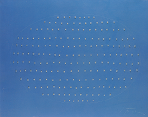Abstract
Comparative literature was born with the national paradigm of literary historiography in the early nineteenth century when literary studies, together with other historical and comparative studies, were institutionalized as a particular field of research and higher education. The cognitive pattern generated by this paradigm comprises both national literary studies and comparative literature. They are both instances of comparatism, solidly anchored in a national context as its basic and indispensable point of reference rather than in the border crossing life of literary texts. In contrast, the comparative reasoning of the twenty first century, as exemplified by the emerging interest in world literature studies, attempts to cultivate the comparativity of the literary texts themselves – their potential to engage with several possible contexts of comparison beyond the standard theories and methods of comparatism and without giving an axiomatic priority to one of them. In the traditional aesthetics of imitation, European and non European, the double nature of any text as being organized around both an external centre and a domestic centre is already an integral part of the definition of literature in view, first of all, of their degree of canonicity. Today, more radically, all literary texts, irrespective of canonical position but as part of their status and function as literary texts, are assumed to possess the capacity to be part of several textual and cultural contexts beyond that of their place and time of origin. The paper traces the history of comparative reasoning, leading both to the national paradigm and the nineteenth century inspired comparatism and to the consequences for modern literary studies, opening a broader view of the comparative potentials of texts across time and space.Except where otherwise noted, the content of this site is licensed under a Creative Commons Attribution-ShareAlike 4.0 International (CC BY-SA 4.0).
Authors retain copyright of their work. The CC BY-SA 4.0 licence allows readers to copy and redistribute the material in any medium or format, and to remix, transform, and build upon the material for any purpose, even commercially, as long as the original author is credited and as long as any works that are derived from the original are distributed under the same terms.
Metrics
Metrics Loading ...

